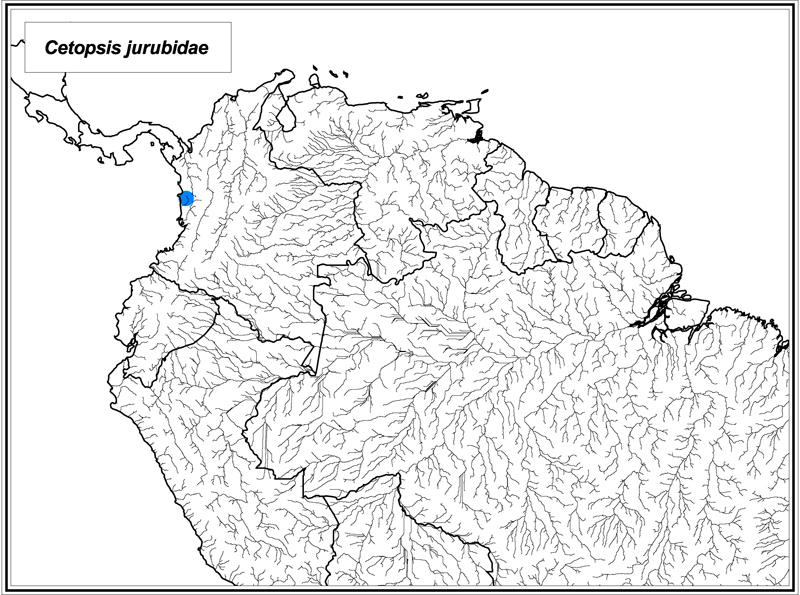
Reproduced from Vari, Ferraris and de Pinna (2005).
Cetopsis jurubidae (Fowler, 1944)
Identification: Cetopsis jurubidae can be distinguished from all of its congeners by the combination of the presence of an eye, the conical teeth on the vomer and dentary, the rounded posterior nares which is distinctly separated from the contralateral nares by a distance greater than the width of the posterior nares, the absence of a dark humeral spot, the lack of dark basal pigmentation on the middle portion of the dorsal fin, the absence of a posteriorly-rounded, variably-developed, bilobed patch of dark pigmentation at the base of the caudal fin, the lack of dark pigmentation on the distal portions of the anal and pectoral fins, and the possession of 9 pectoral-fin rays, 43 total vertebrae, 12 precaudal vertebra, 18 preanal vertebrae, 31 caudal vertebrae, 23 branched anal-fin rays, and 28 total anal-fin rays. Maximum size: 90 mm SL.
Range: Cetopsis jurubidae is only known from the R�o Jurubid� of the Pacific Ocean versant of western Colombia.
Information from Vari, R. P., C. J. Ferraris Jr. & M. C. C. de Pinna. 2005. The Neotropical whale catfishes (Siluriformes: Cetopsidae: Cetopsinae), a revisionary study. Neotropical Ichthyology 3:127-238.
